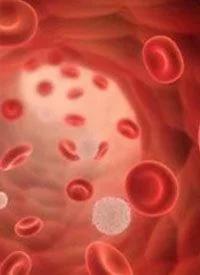Ruxolitinib Improves ORR in Steroid-Refractory, Dependent Chronic GVHD
Ruxolitinib was found to demonstrate a superior objective response rate at 24 weeks compared with best available therapy in patients with steroid-refractory or steroid-dependent chronic graft-versus-host-disease, meeting the primary end point of the phase 3 REACH3 trial.

Ruxolitinib (Jakafi; Jakavi) was found to demonstrate a superior objective response rate (ORR) at 24 weeks compared with best available therapy (BAT) in patients with steroid-refractory or steroid-dependent chronic graft-versus-host-disease (GVHD), meeting the primary end point of the phase 3 REACH3 trial.1
The study also met key secondary end points, which were significant improvement in failure-free survival and patient-reported symptoms that were assessed by a validated chronic GVHD-specific score. Full findings from the study are expected to be presented at an upcoming medical meeting.
“These positive topline results of the pivotal phase 3 trial in chronic GvHD show that treatment with Jakavi results in superior overall response and failure-free survival compared to alternative treatment options and will help to inform treatment decisions among patients refractory to steroids following bone marrow transplantation,” David Feltquate, Head Hematology Development Unit, Novartis, the developer of ruxolitinib, stated in a press release. “We look forward to sharing further details of the data, which complement the previous findings for Jakavi in the acute form of the disease, and plan to initiate regulatory filings for steroid-refractory GvHD in Europe and other ex-US countries.”
In May 2019, ruxolitinib was approved by the FDA for the treatment of adult and pediatric patients at least 12 years of age with steroid-refractory acute aGVHD. The agent is also approved by the FDA as a treatment for patients with polycythemia vera who are intolerant of or have an inadequate response to hydroxyurea, as well as for the treatment of patients with intermediate or high-risk myelofibrosis.
In the randomized, open-label, international, REACH3 trial (NCT03112603) investigators sought to evaluate ruxolitinib compared with BAT in patients with steroid-refractory or steroid-dependent chronic GVHD following allogeneic stem cell transplant. Approximately 331 patients who had undergone allogeneic stem cell transplant, had evident myeloid and platelet engraftment, and were receiving systemic or topical corticosteroids were enrolled. Those who received 2 or more systemic therapies, in addition to corticosteroids with or without calcineurin inhibitors, and received prior treatment with JAK inhibitors were ineligible for enrollment. Crossover to ruxolitinib was permitted after cycle 6.
Novartis stated that the topline REACH3 data build on previously reported results from the multicenter, open-label, phase 3 REACH2 trial (NCT02913261), which showed that ruxolitinib improved outcomes in a number of efficacy measures in patients with steroid-refractory or steroid-dependent acute GVHD.2
In REACH2, investigators randomized 309 patients with steroid-refractory aGVHD to ruxolitinib or investigator’s choice of BAT. Results showed that the ORR at day 28 was 62.3% with ruxolitinib versus 39.4% with BAT (P <.001) in the overall population. The durable ORR at 8 weeks, a secondary end point, was 39.6% versus 21.9%, respectively (P <.001), and the median failure-free survival was 5 months versus 1 month, respectively (HR, 0.46; 95% CI, 0.35-0.60). The median overall survival was 11.1 months in the ruxolitinib group versus 6.5 months in the control group (HR, 0.83; 95% CI, 0.60-1.15).
Data from a subgroup analysis of the REACH2 trial were presented at the 2020 European Hematology Congress. Findings showed that ruxolitinib improved response in adults aged 18 to 65 (OR, 3.12; 95% CI, 1.84-5.30) and in those who did not did not respond to or who progressed on high doses of steroids (68.6% vs 32.6%; OR, 5.04; 95% CI 1.85-13.75).3
Patients with aGvHD grade II had an ORR of 75.5% with ruxolitinib compared with 50.9% for standard of care (OR 2.96; 95% CI, 1.30-6.76). The ORR for patients with skin involvement was 72.0% versus 47.3% in favor of the experimental arm (OR, 2.99; 95% CI, 1.55-5.79).
Ruxolitinib also induced high response rates in patients with varying degrees of disease severity, organ involvement, related or unrelated donor, and irrespective of prior GVHD treatment used.
References:
- Novartis announces Phase III study of Jakavi® in chronic graft-versus-host disease met primary and key secondary endpoints [news release]: Basel, Switzerland. Novartis. https://bit.ly/2OOklbr. Published: July 23, 2020. Accessed: July 23, 2020.
- Zeiser R. Ruxolitinib versus best available therapy in patients with steroid-refractory acute graft-versus-host disease: overall response rate by baseline characteristics in the randomized phase 3 REACH2 trial. Presented at: the 25th European Hematology Congress. June 11-21, 2020. Abstract #S255.
- Ruxolitinib for glucocorticoid-refractory acute graft-versus-host disease. New Engl J Med. 2020;382:1800-1810. doi:10.1056/NEJMoa1917635



